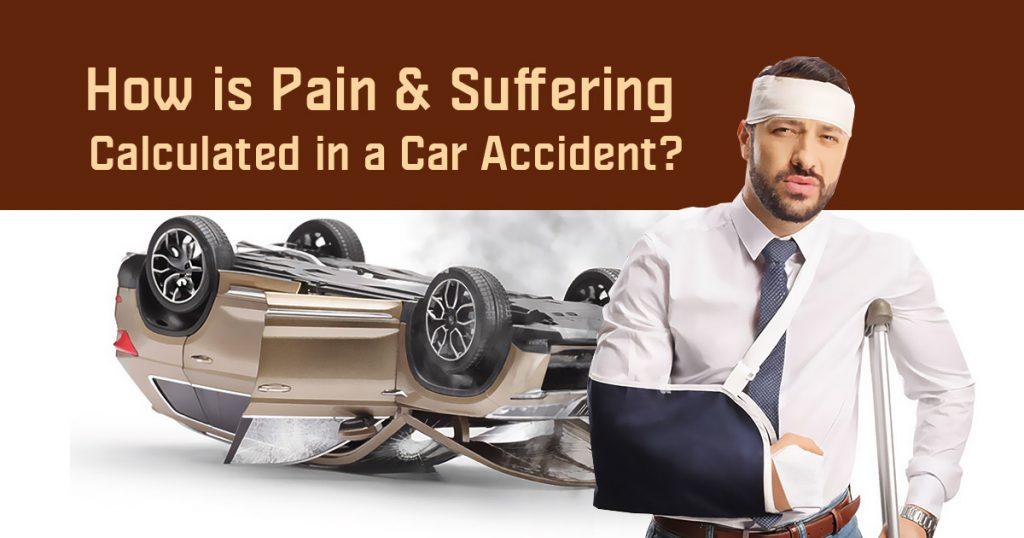Being in a car accident can be a really shocking experience, both physically and emotionally. The sudden crash, the noise of car horns, and the flashing lights of emergency vehicles can leave a lasting impact. Studies show that millions of car accidents happen every year, affecting many lives in different ways. The emotional impact can be just as serious as physical injuries, leaving people feeling anxious, stressed, and vulnerable.
Your life can alter significantly after a car accident. On the mild side, they might cause minor issues like car repairs or short-term health problems. But in more serious cases, they can lead to long-term physical disabilities, ongoing pain, and emotional trauma, drastically changing your quality of life.
For those who go through these challenges, compensation isn’t just about fixing physical damage; it covers the full extent of their suffering. Understanding how to get compensation for pain and suffering is an important step in getting back to normal and finding financial stability after an accident.
What is Pain and Suffering Compensation in Car Accidents?
Pain and suffering compensation is money given to people who have been in car accidents to help with the physical and emotional pain they go through. This isn’t just about paying for medical bills or fixing your car; it also covers things like ongoing pain, stress, and losing the ability to enjoy life as you did before. This compensation aims to help you recover from the overall impact the accident has had on your life.
Knowing about this type of compensation is important because it can help ease the financial and emotional burdens after an accident. Even if you’re not sure how these costs are figured out, there are many resources and ways to learn about what you might be able to claim. Understanding this can make sure you get the help you need to move on after such a tough experience.
How to Calculate Your Pain and Suffering in a Car Accident
Two popular approaches are used to determine the appropriate amount for pain and suffering following a car accident: the multiplier method and the per diem method.
Multiplier Method:
This is the most popular way. First, total up all of the expenses you really incurred due to the accident, including missed work and medical bills. Next, determine the multiplier by dividing the total amount of your injuries and suffering by a value between 1.5 and 5. To get an estimate of your pain and suffering compensation, multiply your total expenses by this amount.
Per Diem Method:
“Per diem” means “per day.” With this method, you decide on a daily rate for your suffering, often based on your daily wages, and multiply it by the number of days you suffer.
Here’s a simple table to show how these calculations work:
| Method | Example Calculation | Result |
| Multiplier Method | $10,000 (costs) x 3 (multiplier) | $30,000 |
| Per Diem Method | $100 (daily rate) x 100 (days of suffering) | $10,000 |
These methods help put a dollar amount on the emotional and physical distress from an accident, ensuring you get fair compensation.
How to File a Car Accident Claim for Pain and Suffering
To find out if you can get compensation for pain and suffering after a car accident, start by looking at how badly you were hurt and how the accident has affected your life emotionally. Usually, this type of compensation is for serious injuries that cause a lot of pain or emotional distress.
Bodily injury coverage in your insurance might help with these claims. This coverage usually pays for the other person’s medical costs if you’re at fault, but it can also be part of your claim for pain and suffering, depending on your policy and the accident details.
Here’s how you can pursue a claim:
- Gather Evidence: To support your pain and suffering claim, gather a range of evidence that shows the severity of your injuries and how they have affected your life. Key types of evidence include:
- Medical Records: Get thorough reports from the physicians and medical facilities that provided your care.
- Take pictures: Document the scene of the collision, your injuries, and any property damage.
- Witness Statements: Get written or recorded statements from individuals who saw the collision or who can vouch for your injuries.
- Personal Journals: Record your daily pain and emotional distress levels as well as how your injuries impact your everyday activities and quality of life.
- Consult a Legal Professional: Talk to a lawyer who knows about personal injury or car accidents. They can help you understand your rights and guide you through the process.
- Contact Your Insurance Provider: Ask them what your policy covers regarding pain and suffering.
- Negotiate for Fair Compensation: With your lawyer’s help, negotiate with the insurance company to get the compensation you deserve.
Following these steps can help you effectively claim compensation for your pain and suffering.
The Pursuit of Pain and Suffering Claims
It’s really important to act quickly when you’re trying to get compensation for pain and suffering after a car accident. Waiting too long can cause problems like losing important evidence, witnesses forgetting details, or even missing the deadline to file your claim, which is called the statute of limitations. These issues can make your case weaker and might mean you get less money than you deserve.
To get the best results, start gathering evidence and talk to a lawyer as soon as you can. This not only makes your claim stronger but also shows how serious your injuries are and how they’ve affected your life.
Do not wait around if you have had an accident. Take action now to make sure you get the compensation you deserve. Contact a legal expert, keep detailed records of your experiences, and talk to your insurance company right away to protect your rights.
